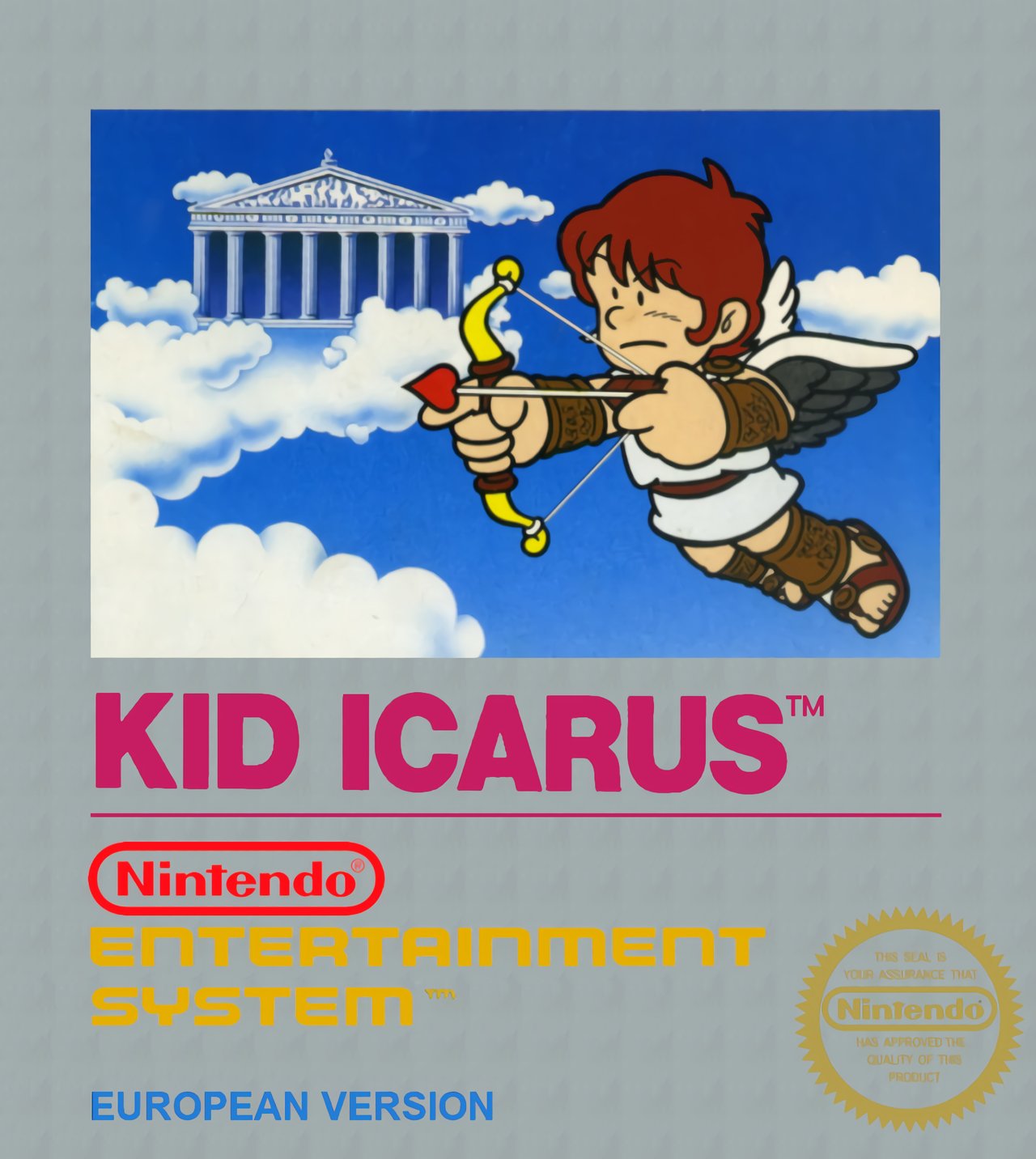
KID ICARUS
Kid Icarus, released for the NES in 1986 by Nintendo, stands as a testament to the artistic capabilities of 8-bit gaming, blending rich mythology-inspired visuals with engaging gameplay to create an immersive and visually captivating experience. As a platformer steeped in Greek mythology, Kid Icarus transforms the NES into a vibrant tapestry of gods, monsters, and heroic quests, showcasing the console’s potential for detailed and imaginative artwork.
At the core of Kid Icarus’s artistic brilliance is its meticulously crafted sprite work and character design. The protagonist, Pit, is depicted with a distinct and expressive spirit that conveys both agility and determination. His flowing wings and dynamic animations allow players to feel his swift movements and heroic spirit as he navigates through various challenges. The diverse cast of enemies, from harpies and cyclopes to treacherous minotaurs, are each uniquely designed with bold silhouettes and vibrant colors that make every encounter visually memorable. Bosses, in particular, are larger and more intricate, embodying the mythological grandeur of their inspirations and providing visually spectacular confrontations that stand out against the game’s detailed backgrounds.
The game’s environments are a masterclass in 8-bit artistic design, each level meticulously crafted to reflect different facets of ancient Greek mythology. From the sunlit temples and sprawling forests to the dark, foreboding underworld, each setting is brought to life with a rich and varied color palette that enhances the immersive experience. The backgrounds are layered with intricate details, such as ornate columns, cascading waterfalls, and ancient statues, which add depth and texture to the scenes. These elements not only create a visually stimulating environment but also serve as integral parts of the storytelling, guiding players through Pit’s epic journey with visual cues and thematic consistency.
Animation in Kid Icarus is another cornerstone of its artistic success. Despite the NES’s technical limitations, the game achieves remarkably smooth and fluid animations that bring the world to life. Pit’s acrobatic maneuvers, enemy movements, and environmental interactions are depicted with precision, enhancing the sense of action and adventure. The seamless transitions between different animations maintain the game’s pacing and ensure that gameplay remains engaging and visually coherent.
Visual storytelling is seamlessly integrated into Kid Icarus’s design. Each level not only presents physical challenges but also narrates parts of Pit’s quest to defeat the evil Medusa and rescue the goddess Palutena. Environmental storytelling, such as the decay of once-majestic temples or the eerie calm of desolate landscapes, conveys the overarching narrative without the need for extensive text. These visual elements work harmoniously with the gameplay mechanics, creating a cohesive and engaging narrative experience that draws players deeper into the mythological world.
The audio design complements Kid Icarus’s visual artistry with its memorable soundtrack and well-integrated sound effects. The music, composed by Hirokazu Tanaka, features melodic and atmospheric tunes that evoke the grandeur and mystery of ancient Greece. Sound effects, from the swoosh of Pit’s wings to the clash of his weapons against formidable foes, are crisp and effectively tied to the visual actions, enhancing the overall immersion.
In conclusion, Kid Icarus on the NES exemplifies how artistic vision and technical skill can converge to create a visually stunning and immersive gaming experience. Its detailed sprite work, richly designed environments, fluid animations, and cohesive visual storytelling elevate it beyond a standard platformer, making it a beloved classic that continues to be appreciated for its artistic craftsmanship and enduring charm. Kid Icarus not only offers engaging and challenging gameplay but also stands as a remarkable piece of interactive art, celebrating the mythology-inspired artistry of early video games.

